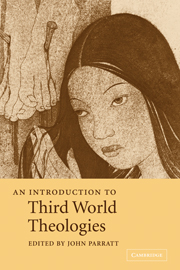3 - India
Published online by Cambridge University Press: 05 June 2012
Summary
Distinctively Indian Christian theologies began to emerge in international discussion nearly two hundred years ago. The late 1960s and 1970s saw the publication of several volumes analysing the life and work of pioneers by Robin Boyd (1969), Kaj Baago (1969), M. M. Thomas (1970) and Stanley Samartha (1974). These were used as texts for seminary courses on Indian Christian theology, which in turn stimulated further theological endeavours to understand Indian religions and society and respond in a way that was ‘biblically sound, spiritually satisfying, theologically credible, and pastorally helpful’ (Samartha 1991: ix) in the Indian context. This chapter begins by considering Indian realities and then identifying and describing three distinct tracks of response. Indian re-readings of Christology and the theology of the Holy Spirit (pneumatology) will help to focus these, highlighting the ‘Indianness’ of the emerging theologies and their challenge to traditional modes of theologising.
INDIAN REALITIES: RELIGIONS AND SOCIETY
India is not only a nation but a subcontinent with a diverse mixture of communities facing complex social and economic challenges. Indian realities are sometimes represented by the shorthand: ‘religions and society’ or ‘religions and poverty’ (Abraham 1990, 3–27). These and their interrelationship produce the three main questions with which Indian theologians grapple: the position of the Christian faith in the plural – particularly the multi-faith – context; the relationship of Christianity to the dominant tradition of Hinduism; and the Christian response to socio-economic oppression.
- Type
- Chapter
- Information
- An Introduction to Third World Theologies , pp. 44 - 73Publisher: Cambridge University PressPrint publication year: 2004
References
- 2
- Cited by

